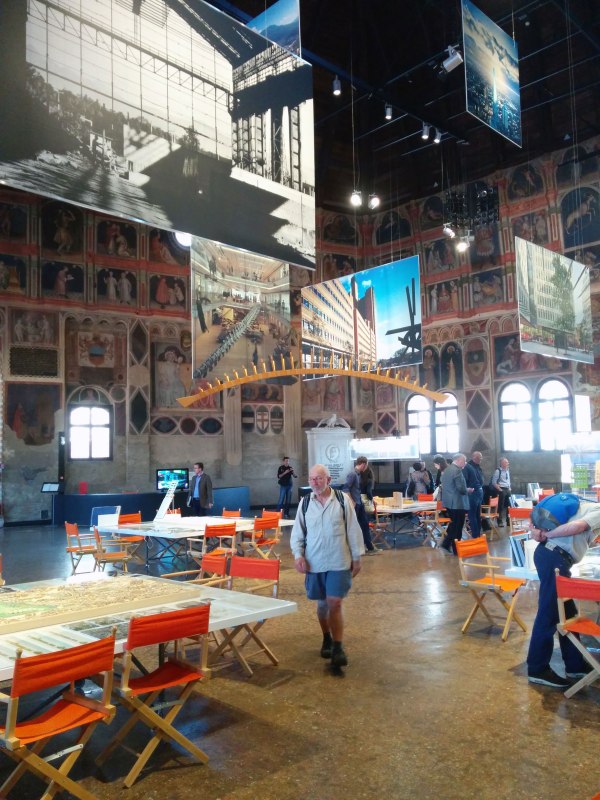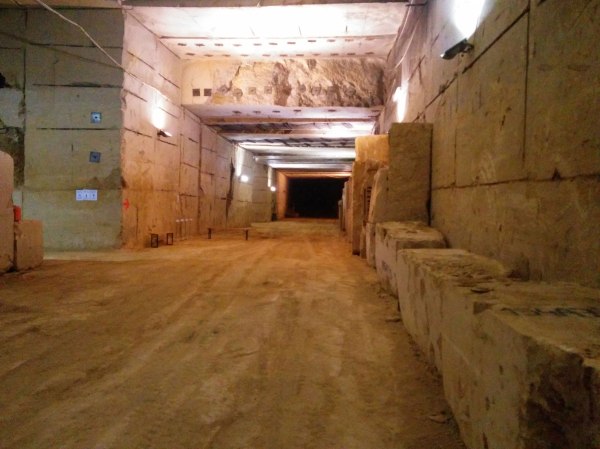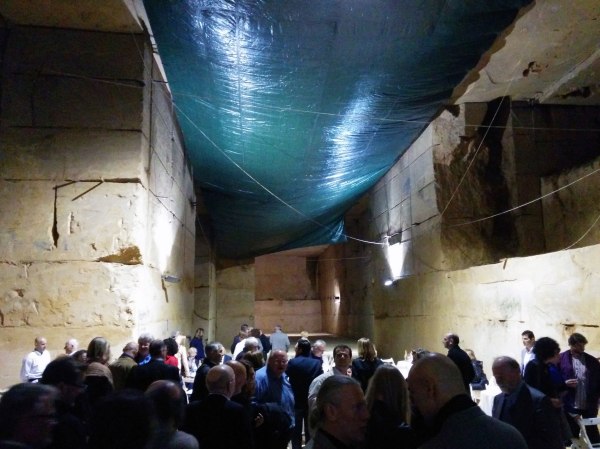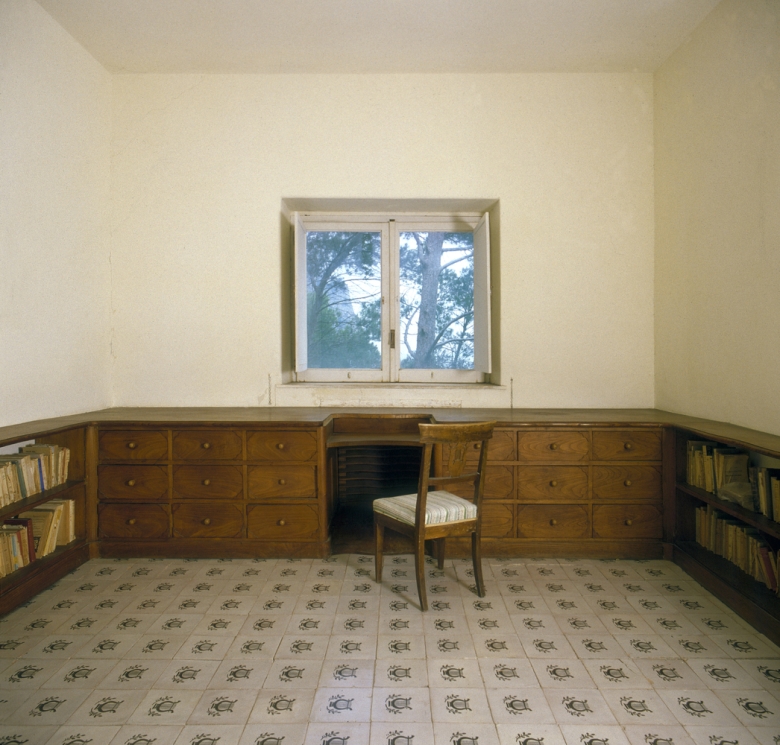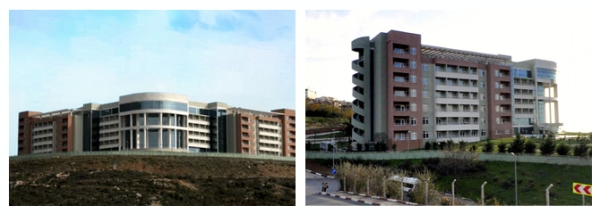Anyone out there?
I’ve been quite busy in the last couple of years and stopped writing here my stories.
Some days ago Giancarlo kindly commented on an old post “Don’t give up the blog!” and since then I am thinking about resuming it.
Here’s a quite easy piece for a tentative re-start, my favourite motivational video!
The shirt is awful, but I love the speech!
Two Days in Padova
Just a few pictures taken with my phone at the fringes of the General Assembly of the Architects’ Council of Europe in Padova, 24th-25th of April.
Walking along some masterpieces of Architettura Razionalista in the city centre towards the Assembly’s venue. The white building below was built under the fascist regime for the INPS (National Institute for Social Security).
The building was designed 1933-34 by arch. Gino Peressutti and completed in 1937. Full documentation about this building and other examples of 20th century architecture in Padova in Adriana Tiso’s very comprehensive website Padova un caso studio.
Above, Torre dell’orologio in Piazza dei Signori. Below Salone del palazzo della Gran Guardia where the assembly was hosted by the Municipality of Padova. In the picture Danilo Vespier is introducing a project of RPBW in Trento, Le albere.
Stairway leading to the exhibition space at “Palazzo della Ragione”, an amazing venue for the Renzo Piano Building Workshop exhibition. Every two years Giuseppe “Pino” Cappochin is organising in Padova a prestigious international architecture award and the winner is invited for a dedicated exhibition.
Each one of the 20 tables of the exhibition (open until the 15th of July) tells the story of a project by Renzo Piano with drawings, photographs, maquettes and videos. An excellent exhibition documenting a permanent anti-dogmatic search for balance between social engagement and building industry, technology and tradition, elitism and pop culture, functionalism and expression.
My friend Serban Tiganas, president of the Chamber of Architects in Romania, spotted out of the exhibition off for a walk in town. First stop at the exhibition of the projects awarded by the previous Cappochin awards: Mario Botta, David Chipperfield, Zaha Hadid but also some other less well known excellent architects. The pictures lay on huge blocks of yellow stone of Vicenza according to the exhibition design concept of RPBW.
A walk in Padova should not leave out a coffee at Pedrocchi and a visit at the Basilica del Santo. In this case, due to the national holiday, the Sanctuary was very crowded.
Here I am in front of the Basilica and Donatello’s Gattamelata equestrian monument.
In the late afternoon we went to Vicenza to visit the Laboratorio Morseletto where I took some snapshots of stones and machines.
I like these machine much more than sportscar and these steel hardware more than jewels.
Then we went to the quarries under the Colli Berici where the Stone of Vicenza (yellow, grey or white limestone) is extracted since centuries.
Here is the place where we had an unforgettable dinner, hosted by Laboratorio Morseletto. They were so kind and so discrete, they not even took the floor before or during the dinner. A rare example of elegance and generosity.
Casa Malaparte
Casa Malaparte is one of the most controversial and beautiful houses of modern architecture.
Originally designed in 1938 on a breathtaking spot of Capri by Adalberto Libera, the house was completed in 1942 in a tortuous relationship with its owner, writer, intellectual and fascist Curzio Malaparte.
In 1963 it was the protagonist of Jean-Luc Godard’s movie “Le Mépris” with Brigitte Bardot and Michel Piccoli.
John Hejduk wrote about it a beautiful article for Domus in 1980.
- Casa Malaparte © Andrea Jemolo, 1988 / Courtesy Photology, Milano
These and other protographs by Andrea Jemolo are going to be showed in Milan at Photology in occasion of the next Salone del Mobile from the 7th of April untill the end of Mai.
How Sustainable Choices Lower Home Insurance Costs
Another advantage of going green
Home insurance coverage is beneficial to homeowners because it’s one of the best ways to be secure financially if the worst should happen. However, there have been recent misgivings about insurance because of the rising costs. In the UK, over five million households have no home insurance because it’s an added expense, while in Ireland The Independent reported that premiums will most likely continue to rise due to higher taxes.

It’s a good thing that there are ways of how to lower insurance costs while protecting the environment at the same time—this can be achieved through making sustainable choices in the home. Here are some of the ways, courtesy of the US Green Building Council:
Update Plumbing and Fixtures
Water damage accounts for the majority of homeowners’ claims in the US, 90% of which is attributed to toilet failure. In comparison to European countries, as early as January of this year Ireland’s insurers are already experiencing financial toil because of this winter’s storms. Aviva’s analysts claim that the demographic of water damage claims is nearly 40%, and this may have been avoided if green-certified fixtures which slow down leaks were installed.
HVAC Systems
Faulty air conditioning systems cause house fires which account for 15% of insurance claims. Energy-efficient HVAC systems that are not overworked even in extreme temperatures significantly lower the risk of fire. If the house is overhauled to include this system, the risk of freezing pipes may also be avoided.
Energy-efficient Roofing
In updating roofing systems, it’s better to opt for green choices such as recycled steel and aluminium. If 75% of the roof’s surface is made up of these materials, chances are, the house will be safer from damage caused by devastating hail, torrential rain, and strong winds. This translates to a reduction in risk of costly damage to your property, as well as claims from natural disasters.
Low Energy District Renovation
Recently I was interviewed by Youris on replicability of energy efficiency solutions for the regeneration of urban districts, the ambitious focus of the R2Cities project. The project is cofinanced by the EU 7th Framework Program, involving the cities of Valladolid, Genoa and Instanbul, together with a broad range public and private stakeholders. Here is the full text of the interview, with many thanks to Elena Ledda of the Youris team. In the pictures the three pilot projects in which the new methodologies will be implemented and monitored.
The overall building stock represents about 40% of the EU’s energy consumption. It also produces about 36% of its total CO2 emissions. Besides, new buildings only account for 1% to 1.5% of the building stock. This means that renovation of existing buildings could be relevant for energy saving and greenhouse gases reduction.
In particular R2CITIES, bets on reducing, by about 60%, the energy consumption of districts renovated on a large scale. “District renovations are not very well developed in Europe”, says project co-ordinator Rubén García, a researcher at the energy and information and communications technology division of an applied research institute, called the CARTIF Technology Centre, based in Boecillo, near Valladolid, Spain. “Our aim is to approach the district as a whole to boost economies of scale and ensure replicability of our approach to other cities.”
Three local authorities in three different countries have become involved in showcasing these potential savings. They are located in Valladolid, Spain, Genoa, Italy and Kartal-Istanbul,Turkey. All three share common problems, such as insufficient insulation. Common solutions to meet the energy needs of these districts include adoption of solar thermal and photovoltaic energy production. Their ultimate goal is to achieve cities with a near-zero energy consumption.
Today, the regulatory framework for energy savings, related to renovation, is not homogenuous across Europe. “Until now legislations in Europe have been concentrating mainly on new buildings, for which we have good rules and requirements, rather than on the renovation of existing ones,” says Kurt Eriksen, general secretary of an international non-profit organisation promoting sustainable building, called the Active House Alliance, and based in Copenhagen, Denmark. “Few countries, such as Denmark and Germany, do have good requirements for renovation, but many others don’t.” However, “this is definitely going to change,” Eriksen tells youris.com “holistic renovation is necessary to meet the targets for CO2 reduction in 2050.” These targets are of 80% below 1990s’ levels.
To realise the ambitious goal of reducing energy consumption in urban districts, it is essential to define renovation standards. “Individual countries have different methodologies to refurbish buildings, so if we managed to find, as the project aims to, a common standard to implement in different countries, it would be a breakthrough,” says Eriksen, “like having three different languages merged into a common one.” This explains why ensuring the replicability of the building showcases is key. A methodology made of “a book of good, and perhaps bad practices,” as García defines it, could help turn these showcases into mirror of future cities. This book would include the various building development stages, a description of the tools used during the renovation and cost-related information. All this information will be gathered into a single place thanks to a so-called Building Information Modelling (BIM) system.
However, achieving replicability may not be that straightforward. “If you want replicability of solutions you need to use the same philosophies and perhaps also the same technologies that were in the first project,” Eriksen points out, “knowledge sharing from within a project to others is limited; therefore replication very often requires involvement of one or more of the previous partners.”
The concept of replicability is relative. “Replicability per se in buildings and in urban policy does not exist because each site has specific characteristics such as ownership structure, hydrogeological, climatic, cultural characteristics and users’ needs,” remarks Antonio Borghi, an architect based in Milan, Italy, and the chairman of the working group urban issues of the Architects’ Council of Europe ACE-CAE.
However, he definitely sees the potential advantages of these projects lies in their knowledge collection and sharing, which can then be adapted to the individual case. “Replicability is intended as the knowledge transfer of procedures, methodologies, technological solutions from one context to another,” Borghi tells youris.com. “Therefore the best practices book will always need to be adapted according to different contexts, needs, solutions and available resources and also be tailored to reach decision makers”.
All three experts agree that finance is a possible obstacle to successful achievement of large scale district renovation. Indeed, the lack of resources of public administrations and their failure to promote districts energy efficient renovation is an issue.
Besides, the unavailability or unwillingness of buildings owners and end-users, whose involvement and often contribution is essential, would also represent a major barrier to renovations. “In order to achieve district energy renovation it is important to find a balance between the various stakeholders,” says Borghi referring to public administrations, end users, businesses, banks, “so that no one has much more power than the others,” he adds. He also points to the need to restrain industry’s pressure to sell their products. He concludes: “The best guarantee of success for all urban requalification projects is decision sharing by a broad partnership of stakeholders.”









